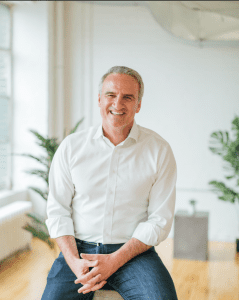[vc_row][vc_column][vc_column_text]Have you ever tried cooking directly from a recipe book? Usually, the instructions are pretty straightforward. Occasionally, you might not know exactly what the writer means (I’m still not sure what a “firm peak” is when it comes to whipping butter), but you can usually power through. Maybe you have to switch an ingredient or two, but you believe in your heart of hearts that the recipe will turn out well.
And then you pull your soufflé out of the oven and immediately compare it to the picture in the recipe book. Odds are that it looks almost nothing like that picture. But the recipe book promised a perfect soufflé! Why is mine a little lopsided and oozing out the side?
Recipes aren’t immutable formulas. Even if you get one right, perhaps after a few tries there’s a good chance that you will start to tweak it anyway; experimenting a bit and customizing it to your liking. (As a quick aside, in my opinion, banana bread can never have too many chocolate chips!) While the recipe book tells us to follow a precise list of steps and practically guarantees success – and tantalizes us with mouthwatering food photos – the reality is a different story. That’s because it’s actually difficult to cook well, even with a set of instructions.
The same holds true for innovation frameworks.
Every framework ever created – basically, a roadmap for success – promises a Holy Grail of simplicity and results. “This framework is so easy to execute, and the results will be amazing!” sounds like the latest diet fad. Innovation frameworks take incredibly complex processes and try to boil them down into simple steps with easy-to-understand visuals. They have to because otherwise, people wouldn’t adopt them. In a perpetual hunt for answers and “quick fixes,” innovation frameworks provide us with hope — hope that if we simply follow the steps, we’ll win. And we’ll keep winning, because as long as we follow the frameworks we’ll have a repeatable, scalable model for innovation.
Innovation doesn’t work that way. There are too many variables and unknowns. It’s messy: “results may vary” is an understatement. This is especially true when trying to build new ventures. Growth innovation is mostly about jumping into the unknown.
Having said that, innovation frameworks are a necessity. Without even the semblance of a playbook, you will spend a lot of time making lopsided soufflés, and the rate of failure will absolutely increase. Although innovation frameworks aren’t formulas (even if they’re positioned that way) they can be helpful. Highline Beta uses elements of Lean Startup, Design Thinking, and Jobs to be Done every day. It incorporates concepts from the Three Horizons of Innovation, open innovation and uses a variety of innovation tools. Over the years, Highline Beta has created its own blend of innovation frameworks, models, tools and systems, and frankly, apply all of those things a little bit differently with each engagement. It knows that there is no single path to success because every organization and every business leader is unique.
RELATED: Innovative Fitness is Elevating Your at Home Training
The promise of so many innovation frameworks and the people who push them is that they represent a fully-baked solution to everyone’s problems. Can’t innovate well enough? Purchase an innovation framework. Can’t move fast enough? Train everyone on an innovation framework and hold on for dear life. If only it were that simple.
I believe that the best way to apply innovation frameworks to actually drive real innovation is by taking a bottom-up approach. Instead of implementing an innovation framework across your team or organization, training everyone, and then waiting for the magic to happen, take a few basic principles or concepts and apply them immediately on a single project.
Highline Beta has found the concept of DVF to be helpful. (Desirability – Feasibility – Viability) from Design Thinking very effective. (Desirability = do people want it; Feasibility = can it be built; Viability = is it good for business). You start by identifying all of the assumptions you have for a new venture. Assumptions are things you believe to be true but haven’t proven yet. Then you identify each assumption based on whether it’s focused on desirability, feasibility or viability. By this point in time, most corporate innovators that are new to this realize they spend most of their time on feasibility and viability assumptions, and not enough time focusing on desirability.
RELATED: 8 Innovative Podcasts to Guide Your New Year
With enough practice, people start to challenge each other more openly. “Ben, I think what you just said there is an assumption, we should test that.” Or: “Do we know if this is really feasible? We’re assuming it is, but how would we build more confidence in that before we spend all that money?” Assumptions and DVF are relatively simple concepts that together provide a new way of identifying the real risks/unknowns with an initiative and prioritizing work. You don’t need to implement a heavy-handed, top-down innovation framework to get started with identifying assumptions and using DVF.
No matter what the various innovation frameworks, methodologies, and models may promise, there is no one formula for success. I think we all inherently understand that, just like we understand that our soufflé recipes won’t come out exactly like the picture, but we want to believe it will. So we over-invest in the implementation of frameworks and follow the steps, hopeful that the answers will be there. Spoiler alert: They won’t be.
Instead, start with a few basic concepts, plucked from any of the innovation frameworks out there, and try them on for size. See how it goes. Learn what works and doesn’t work within your organization. Adapt from there. Practice and get better at using the myriad of innovation tools available. Over time you’ll be able to combine elements of various innovation frameworks, tested through your own experimentation and venture building. This will allow you to come up with a system that’s repeatable, scalable, and works for you.
Ben Yoskovitz is Founding Partner at Highline Beta, a hybrid corporate venture studio and VC firm that evolves the traditional management consulting model to put things into action, not just strategize in the clouds.[/vc_column_text][/vc_column][/vc_row]













